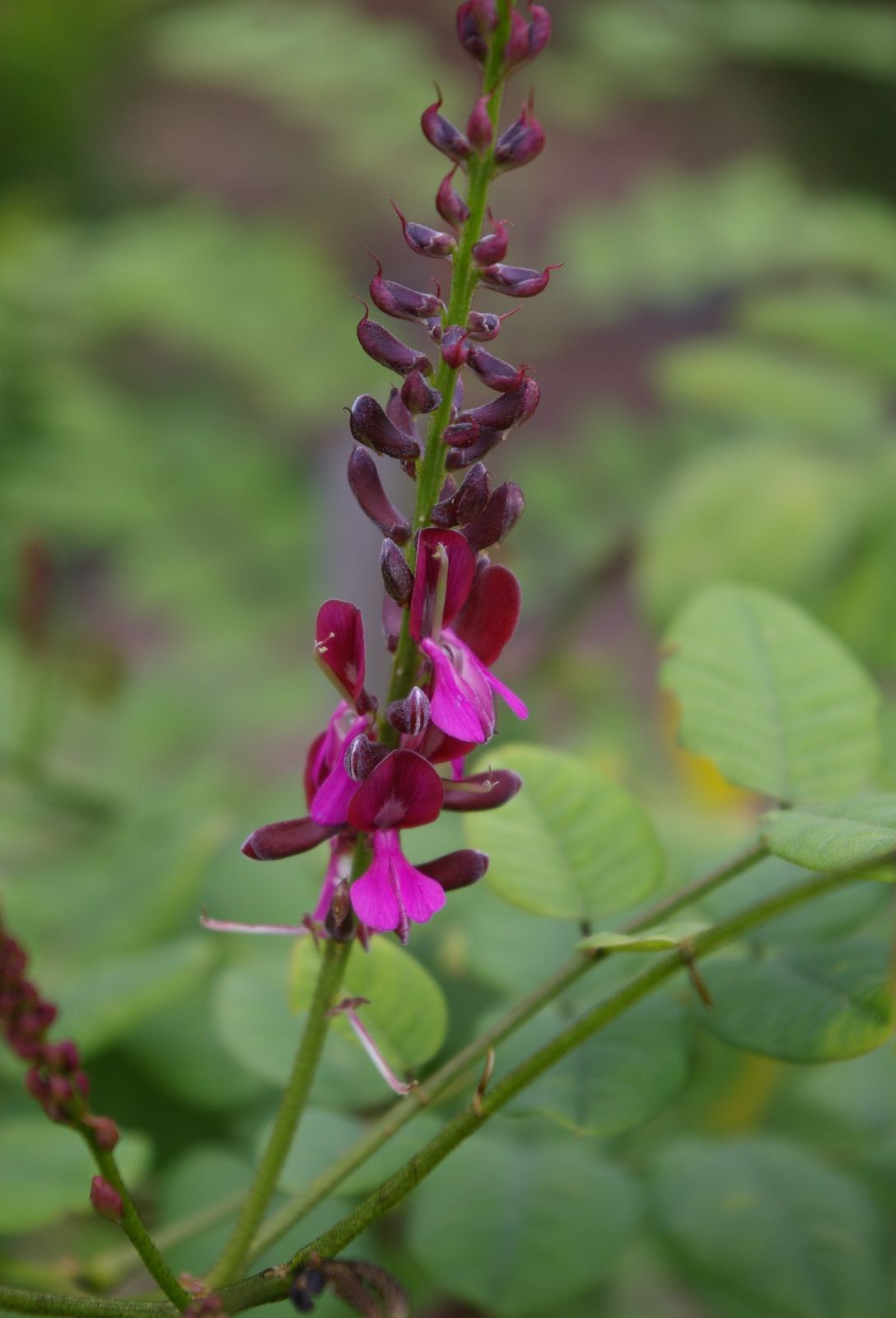Indigofera hebepetala
Credits
Article from Bean's Trees and Shrubs Hardy in the British Isles
Recommended citation
'Indigofera hebepetala' from the website Trees and Shrubs Online (treesandshrubsonline.
Genus
A deciduous shrub, growing about 4 ft high at Kew, but considerably taller where it is not cut back during winter; stems glabrous, except when quite young. Leaves pinnate, 7 to 9 in. long, with usually seven to nine (occasionally eleven) leaflets, which are oblong, broadly oval or slightly ovate, short-stalked, 1 to 21⁄2 in. long, half as much wide, rounded or notched at the apex, glabrous above, with appressed hairs beneath. Racemes 3 to 9 in. long, produced from the leaf-axils of the terminal part of the shoot, and developing in succession as it lengthens. Flowers closely set, twenty to sixty on one raceme, each 1⁄2 to 5⁄8 in. long, the standard petal crimson, wing and keel petals rose-coloured. Pods 11⁄2 to 2 in. long, cylindric, glabrous, carrying eight to ten seeds. Bot. Mag., t. 8208.
Native of the north-western Himalaya, where it is widely spread at altitudes of 6,000 to 8,000 ft. It is strange that so handsome a shrub should be so little known in gardens. The date of its introduction is not recorded, but it has been cultivated at Kew since 1881, when it came with a collection of plants bequeathed by J. C. Joad, a well-known amateur of his time. It produces its richly coloured racemes during August and September. In the open ground its stems rarely survive the winter, and are generally cut back to the old woody stool, a new crop springing up in early summer.


